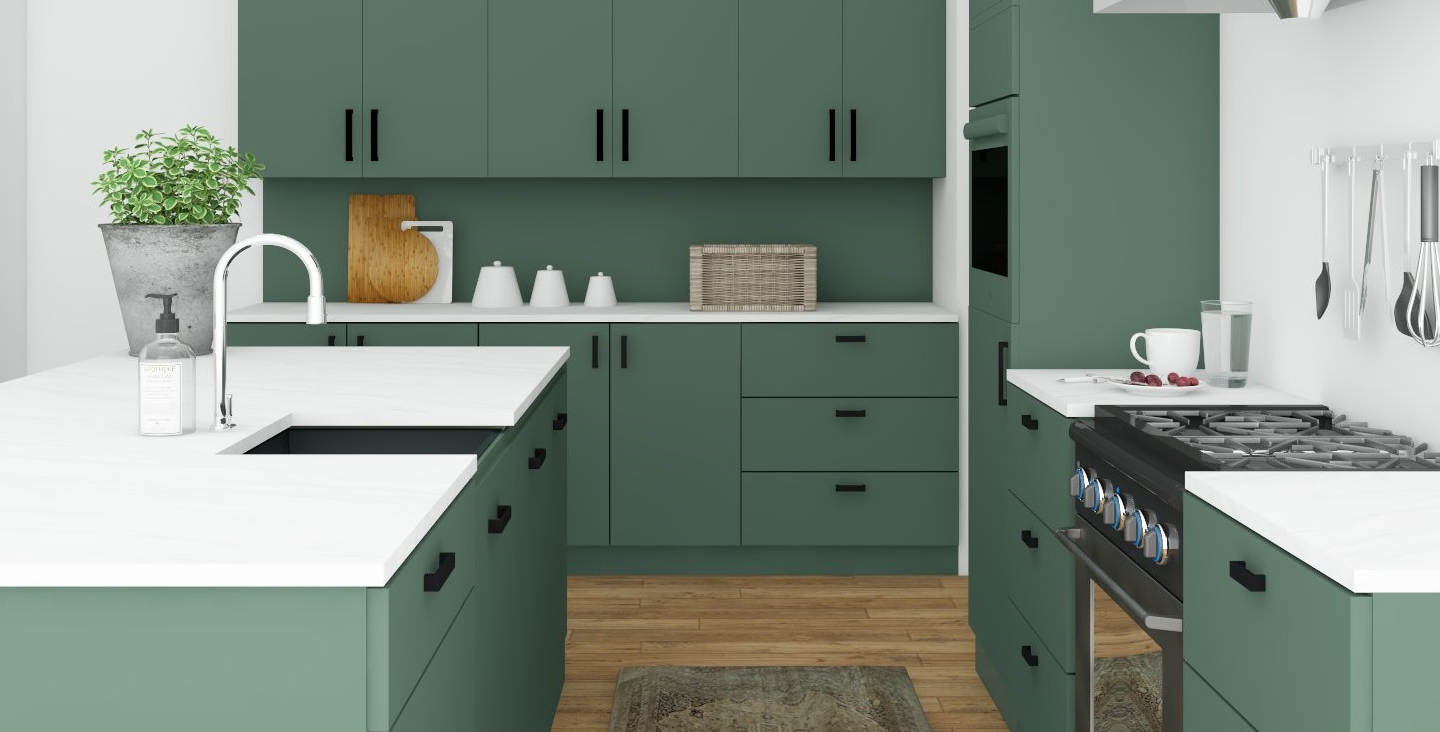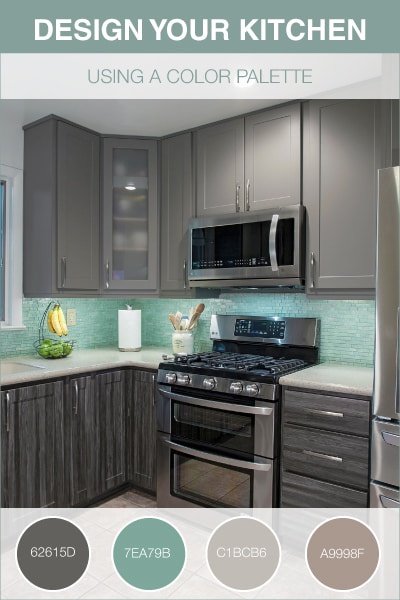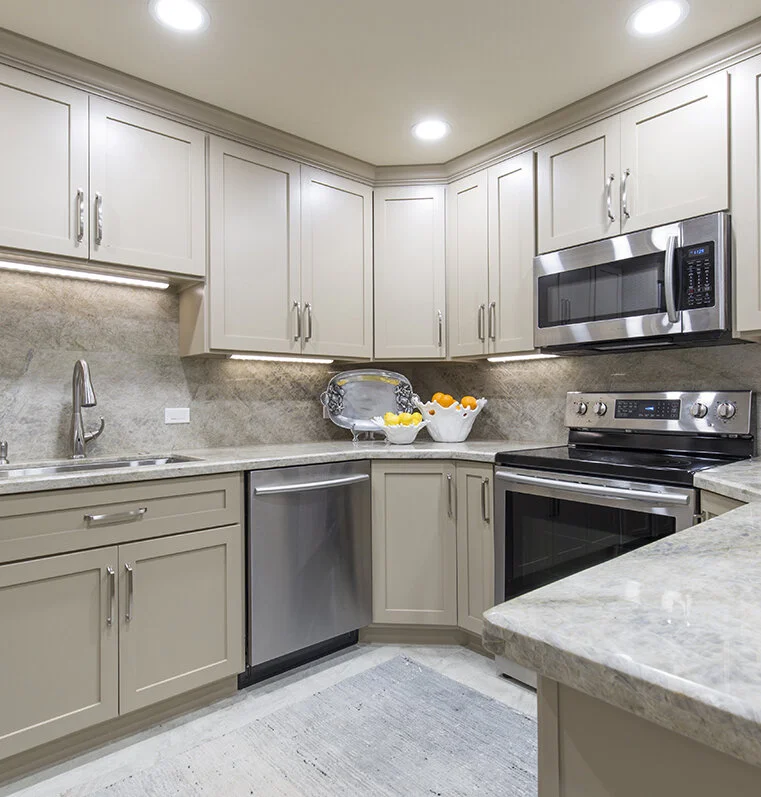Choosing the right colors for your kitchen can transform the heart of your home into a space that feels welcoming and vibrant. Have you ever walked into a kitchen and immediately felt a sense of warmth or calm?
That’s the power of color working its magic. You might wonder how to create that same atmosphere in your own kitchen. The answer lies in understanding the psychology of colors and how they affect your mood and energy. Imagine cooking breakfast surrounded by hues that invigorate your senses or winding down with a warm drink in a space that soothes your soul.
You’ll discover simple yet effective strategies to design kitchen colors that not only reflect your personal style but also enhance your overall kitchen experience. Keep reading, and unlock the secrets to a kitchen that speaks to your senses and elevates your everyday life.
Choosing A Color Palette
Selecting kitchen colors can transform the space into a warm and inviting area. Consider complementing cabinetry and countertops with neutral tones or vibrant accents. Balance is key to achieving a harmonious look.
Choosing the right color palette for your kitchen is more than just picking your favorite hues. It involves a careful balance between aesthetic appeal and functionality. The colors you choose can transform your kitchen into a warm, inviting space or a sleek, modern one. As you embark on this colorful journey, consider the various elements that come into play.Assessing Space And Lighting
The size and lighting of your kitchen are crucial factors in selecting your color palette. If your kitchen is small, lighter colors can make it feel more open and spacious. Think soft whites, gentle creams, or light pastels. In contrast, if you have a larger kitchen with plenty of natural light, you might opt for bolder, darker colors. Rich navy blues or deep greens can add a touch of elegance. Pay attention to how natural and artificial lighting affect your color choices throughout the day. Does the morning sun enhance the vibrancy of your chosen colors, or do they become dull under artificial light?Incorporating Personal Style
Your kitchen should reflect your personal taste and style. Do you prefer a modern, minimalist look, or are you drawn to a more rustic, country vibe? Your color palette should align with these preferences. Consider the colors that naturally appeal to you. If you love earth tones, incorporate shades of brown, green, and terracotta. If you lean towards a more contemporary style, consider monochromatic schemes with pops of color for added interest. Think about your lifestyle and how you use your kitchen. A bold red might energize an active space, while soothing blues could create a calm environment for leisurely cooking. Remember, your kitchen is an extension of your personality. Are you ready to let it speak for you? Choosing your kitchen color palette is a journey of exploration and self-expression. With these insights, you can create a space that is not only beautiful but also uniquely yours.Popular Color Schemes
Choosing the right color scheme for your kitchen sets the overall mood. Popular color schemes transform a kitchen’s ambiance and functionality. They can make a space feel warm and inviting or sleek and modern.
Warm Tones For Coziness
Warm tones create a cozy and inviting atmosphere in kitchens. Colors like red, orange, and yellow add energy and warmth. They make a kitchen feel welcoming and lively. Earthy tones like terracotta and browns bring a natural warmth. They pair well with wooden cabinets and flooring. Try these for a rustic or country-style kitchen.
Cool Hues For Modern Touch
Cool hues provide a sleek and modern touch to kitchens. Blues, greens, and grays offer a calm and serene atmosphere. They are perfect for contemporary and minimalist designs. Light blue can make a small kitchen appear larger. Gray adds sophistication and pairs well with stainless steel appliances. Experiment with mint green for a refreshing vibe.
Creating Contrast
Choosing colors for a kitchen requires balancing light and dark shades. Bright walls paired with dark cabinets create a striking contrast. Accents in complementary hues add depth and interest.
Creating contrast in your kitchen can transform its entire look. Contrast draws the eye and adds depth, making the space feel dynamic. By carefully selecting colors, you can achieve a stunning kitchen design. Let’s explore how accents, highlights, and color balance can enhance your kitchen.Using Accents And Highlights
Accents add interest to your kitchen. Choose a bold color for cabinets or a backsplash. A bright red or deep blue can stand out beautifully. These colors can highlight specific areas. Use them for kitchen islands or open shelves. Accents can also be subtle. Use metallics like gold or silver for handles or fixtures. This adds a touch of elegance without overwhelming the space.Balancing Bold And Neutral Colors
Balance is key in a well-designed kitchen. Bold colors can energize the space. Bright yellows or vibrant greens can make it lively. But too much can be overwhelming. Pair bold tones with neutrals like white, gray, or beige. Neutrals provide a calming backdrop. They allow bold colors to shine without clashing. This balance creates a harmonious and inviting kitchen.:max_bytes(150000):strip_icc()/kitchen-color-palettes-lead-getty-1023-31b27ac7e66b4fc18b655d4bae17e34c.jpg)
Credit: www.marthastewart.com
Integrating Textures And Patterns
Explore bold textures and patterns to create vibrant kitchen colors. Mix different materials like wood and tile. Balance bold designs with soft hues for a harmonious look.
Integrating textures and patterns in your kitchen design can transform the space from mundane to magnificent. It’s not just about colors; it’s about how different elements come together to create a cohesive look. When you thoughtfully combine textures and patterns, you add layers of interest that make your kitchen unique and inviting.Mixing Materials For Depth
Variety is your friend when designing your kitchen. Mixing materials such as wood, metal, and stone can create depth and interest. Consider a wooden countertop paired with metal bar stools. This combination not only adds visual interest but also offers a tactile experience every time you use the space. Using different materials doesn’t have to be overwhelming. Start small. Try integrating a ceramic vase or a woven basket. These additions can add texture without taking over the design. Have you ever noticed how some kitchens just seem to ‘pop’? Often, it’s the subtle interplay of materials and finishes. Imagine a glossy tiled floor set against a matte finish cabinet. The contrast can be subtle, yet striking.Patterned Backsplashes And Walls
A patterned backsplash can be a game-changer. It acts as a focal point, drawing the eye and adding character. Choose a pattern that complements the overall color scheme. Geometric patterns can add a modern edge, while floral patterns might bring a rustic charm. Walls are often overlooked, but they offer a canvas for creativity. Consider a feature wall with a bold pattern, but keep the rest of the space simple. This keeps the focus where you want it, without overwhelming the senses. Adding patterns doesn’t mean your space has to feel busy. It’s about balance. Use patterns to highlight certain areas. A patterned wall behind open shelving can showcase your favorite kitchen items, turning them into a part of the decor. How do you feel about mixing textures and patterns in your kitchen? It’s a personal journey, and there’s no one-size-fits-all approach. What matters is that your kitchen feels like you, with all its unique quirks and charm.Color In Kitchen Accessories
Transform your kitchen with the right color choices. Accessories play a significant role in enhancing kitchen aesthetics. They offer a chance to introduce vibrant hues without overwhelming the space. Thoughtfully chosen accessories can make a kitchen feel inviting and cohesive.
Choosing Complementary Fixtures
Fixtures should harmonize with your kitchen’s primary colors. Chrome or brass can add sophistication. Choose colors that blend with existing tones. Consider the impact of light on fixtures. Reflective surfaces can brighten the space.
Decorative Touches And Utensils
Decorative elements should enhance the overall theme. Think about the color of jars, mugs, and utensils. Bold colors can create focal points. Soft tones add subtle elegance. Mix and match to find the perfect balance.

Credit: foyr.com
Seasonal Color Updates
Seasonal color updates breathe fresh life into kitchen spaces. They offer a chance to experiment and refresh the kitchen atmosphere. Colors can transform how you feel in a room. By aligning with the seasons, you introduce dynamic changes throughout the year. These updates need not be costly or time-consuming. A few tweaks can refresh the entire space.
Adapting To Trends
Staying updated with color trends keeps your kitchen modern. Each season introduces new palettes and shades. Spring might bring soft pastels and floral-inspired tones. Summer often favors vibrant and energetic colors. Fall introduces warm, earthy hues, while winter embraces cool, calming shades. Follow design magazines and websites for seasonal inspiration. Choose colors that align with current trends yet suit your personal taste.
Simple Changes For Refreshment
Small changes can make a big impact on kitchen colors. Consider swapping out accessories like towels, rugs, or curtains. These items can reflect seasonal color changes easily. Paint one wall in a trendy shade for a bold statement. Introduce seasonal blooms in vases to add natural color. Even changing the color of kitchenware can bring freshness. Brighten the space with colored glassware or dishes. Small touches keep the kitchen looking fresh and inviting.

Credit: blog.kitchenmagic.com
Frequently Asked Questions
What Is The Rule For Kitchen Colors?
Choose neutral colors for a timeless kitchen look. Complement with accents that match your style. Ensure colors enhance lighting and space. Consider durable finishes for practicality. Personalize with a few bold elements to add character.
How Do I Choose The Right Color For My Kitchen?
Choose colors that match your kitchen style and size. Bright colors energize, while soft shades create calmness. Consider lighting effects. Select hues that complement existing elements like cabinets and countertops. Test samples before finalizing to ensure satisfaction with your choice.
Can I Take A Picture Of My Kitchen And Change Colors?
Yes, you can use apps to change kitchen colors in photos. Try apps like Adobe Photoshop or Canva. These tools offer easy color editing features. Transform your kitchen’s look before making real changes.
What Is The Best Color Combination For A Kitchen?
White and gray create a clean, modern kitchen look. Blue and yellow add warmth and brightness. Green and wood tones offer a natural feel. Black and white deliver timeless elegance. Choose colors that reflect personal style and enhance kitchen ambiance.
Conclusion
Choosing kitchen colors can transform your space. Bright shades add energy. Soft tones bring calm. Think about the mood you want. Consider lighting and size. Small kitchens feel bigger with light colors. Dark shades add drama to large spaces. Mix and match for balance.
Use accents wisely. Cabinets, walls, and counters should complement each other. Test colors before you decide. Samples help visualize the final look. Remember to express your style. Create a kitchen that feels like home. The right colors make cooking enjoyable.
Personalize your kitchen with colors you love. Enjoy your colorful kitchen journey!
